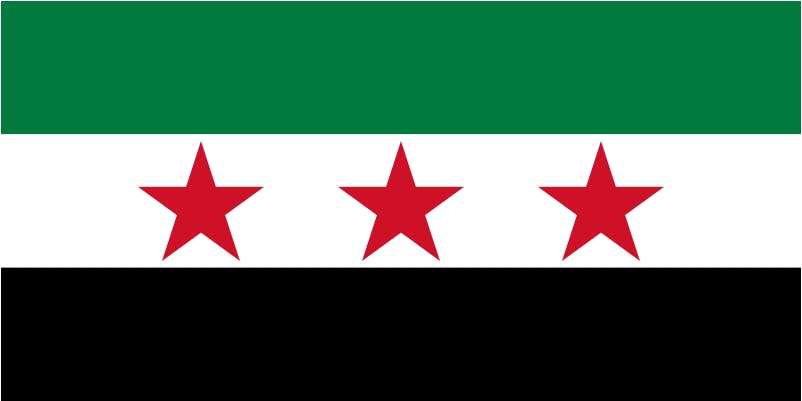The Simpsons has been called many things in its 25-year history. The cartoon has been labeled a bad influence, with George H. W. Bush saying he didn’t want American families following its example in the ‘90s. Promotion for the tie-in movie in 2007 was labelled borderline “racist.” But it’s never been accused of being a stooge in a pro-American “global conspiracy” before—until now.
In an extraordinary rant on May 4th, a news host on Egyptian television channel Al-Tahrir TV played a segment of the popular satirical cartoon from 2001, alleging that it contains evidence of Western involvement in the Syrian revolution and the broader Arab Uprisings that have shaken Middle Eastern politics over the past few years.
In the 13-year-old episode New Kids on the Blecch, Bart becomes part of pre-teen pop group Party Posse. In one of their music videos—which is later revealed to be subliminal advertising for the Navy—the band members fly fighter jets, and drop bombs on generic Middle-Eastern military figures. On the side of the Arab vehicle, the host points out, is a flag remarkably similar to the one used by the anti-government forces in the ongoing Syrian Civil War.
“The flag that appeared on the vehicle on which the bombs were dropped is the flag of the Syrian opposition,” the host says, and yet “this is from 2001—before there was such a thing called the “Syrian opposition”… [raising] many question marks about what happened in the Arab Spring revolutions, and about when this global conspiracy began.”
Sure enough, close comparison shows they’re very similar. The Syrian Opposition flag is three horizontal stripes of green, white and black, with three red stars on the central white stripe. The flag on the vehicle certainly looks similar, although the Al-Tahrir TV makes it difficult to tell whether the stars are red or black due to the low quality of the video.
Here they are for comparison:

A screengrab from the news report.

The flag of the Syrian opposition.

For reference, this is the flag of the pro-Assad Syrian government.
On the face of it, it does seem a very peculiar coincidence. How did a revolutionary flag find its way into a piece of Western pop culture ten years before the revolution even began? Surely this is proof of a malign Western involvement, the “global conspiracy” that the host talks of?
Unfortunately—for the conspiracy theorists—this is fear-mongering. Yes, this scene was aired in 2001, and yes, that flag was really on the side of the vehicle. The footage hasn’t been tampered with—the flag appears in other versions of the song posted online.
The full version of the song
But what’s totally wrong is the notion that the flag was created by the Syrian opposition at the start of the revolution—and the following conclusion that prior Western evidence of the flag is evidence of clandestine Western meddling.
The “Opposition Flag” in fact predates the current flag of the Syrian government by a considerable margin. It was originally known as the “Independence flag,” and was used after Syria gained its independence up until the Ba’athist coup in 1963 which eventually led to the Assad dynasty in power today.
So straight off the bat, it’s clear the claim that in 2001 “there was no such thing as the flag of the Syrian opposition” are spurious. The flag existed—it was just known by another name. The Syrian rebels adopted the flag precisely because of this history.
Similarly, the claims that it “must be Syria” are dubious—apart from the use of an out-of-date flag, there’s nothing to tie the clip to Syria. Between the reference to a generic “far off nation”, and the claims of love “more deadly than Saddam,” the then-current dictator of Iraq, it’s far from clear where the song is referring to.
So why is a pre-1960s Syrian flag appearing in The Simpsons?
Without talking to the animators, it’s impossible to know for sure. But it is clear they wanted to evoke a non-specific, Middle Eastern vibe in the video. How better to do that than to make use of a legitimate, but long-disused flag from the region?
Alternatively, it could be pure coincidence—the animators wanted to create a generic Middle Eastern flag, and accidentally replicated that of pre-Ba-athist Syria. There are, after all, similar thematic elements running through many flags from the region: Yemen’s flag is horizontal red, white and black stripes; the UAE’s is green, white and black horizontal stripes with a red vertical segment; the then-current Iraqi flag was red, white and black horizontal stripes with green stars on. It hardly seems a stretch to suggest that perhaps the animators took common elements from Middle Eastern flags and simply invented a new one.
The irony of is that watching the spoof music video the flag appears in, it’s clear that it’s far from evidence for the American “military-industrial complex”—in fact it’s quite the opposite, satirising the then-fashionable tendency towards “liberal interventionism” that was to lead to a decade of war in Iraq and Afghanistan.
So there you go, The Simpsons didn’t reveal evidence of a global conspiracy with a flag from the future. In fact, the only conspiracy hidden in the animated music video was a backwards-masked recruitment drive for the Navy. Don’t forget to “yvan eht nioj.”
Screengrab via The Simpsons / 20th Century Fox


